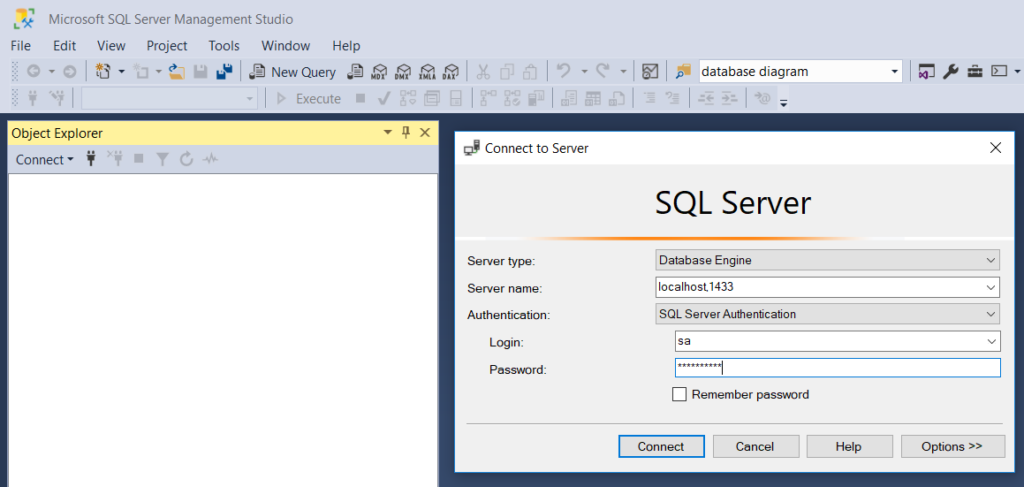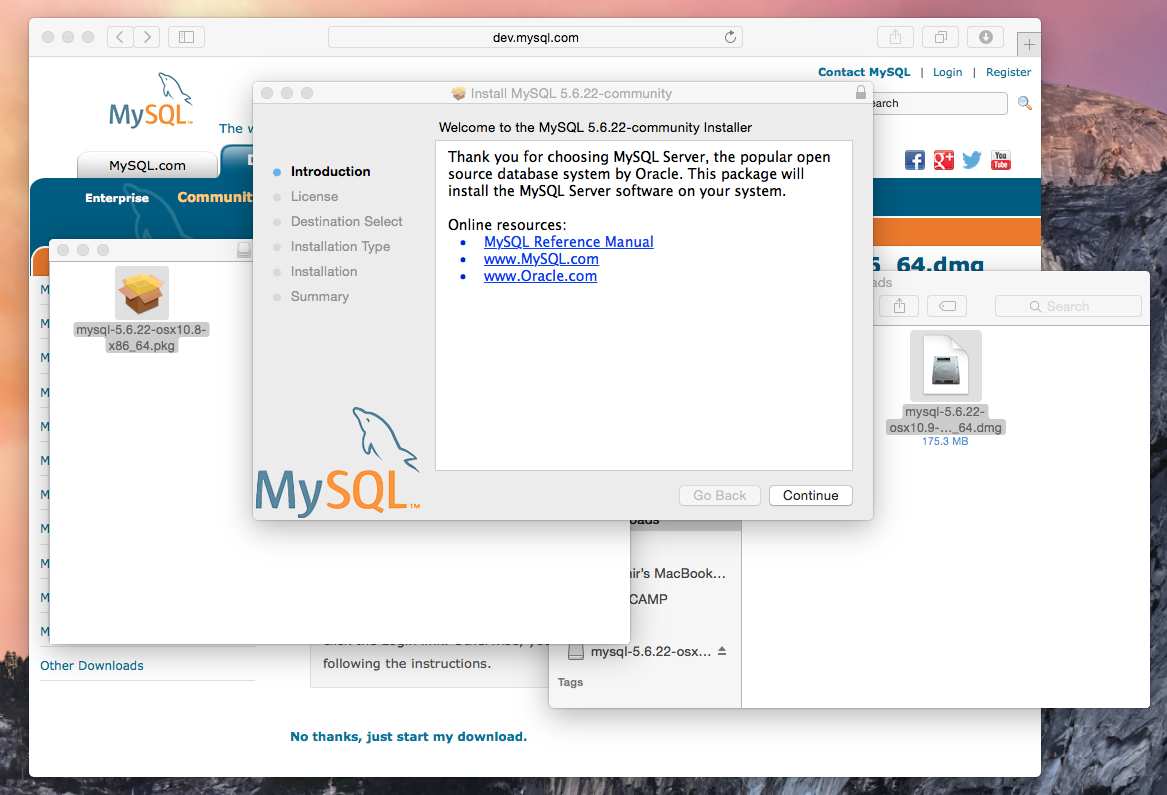
- CREATE SQL SERVER ON MAC INSTALL
- CREATE SQL SERVER ON MAC UPDATE
- CREATE SQL SERVER ON MAC FULL
- CREATE SQL SERVER ON MAC PASSWORD
Tip Repeatedly check the Preview of selected data pane to confirm your choices.įile Type To choose the type of text file, select Delimited or Fixed width. If the Grant File Access dialog box appears, select Select, and then select Grant Access to the top-level folder containing the data source files. If you get a security warning about external data connections being disabled, select Enable Content. This entry was posted in Containers, Docker, Docker Compose, SQL 2019. That’ll delete our custom network and the container but we’ll still have our custom image and volumes, ready for next time we want to do some work against SQL Server 2019. So we’re good to do our work on SQL Server 2019 and when we’re finished we can just run: – There we can see our custom network, volumes, image, and container up and running!
CREATE SQL SERVER ON MAC FULL
The other file can contain any environment variable for SQL Server, a full list is here.Īnd we can check the objects created by compose by running: –
CREATE SQL SERVER ON MAC PASSWORD
The SA password is set in a separate file so that we don’t end up putting it somewhere public 🙂 MSSQL_BACKUP_DIR=/var/opt/sqlserver/backup Then set our volumes, matching the directories created in the dockerfileĪnd finally, let’s have a look at the two environment variable files: –.Set our ports, mapping 15789 on the host to 1433 in the container.Define a service called sqlserver1, setting a build context to the current directory and specifying our dockerfile.Let’s now have a look at the docker-compose.yaml file: – Switch over to run the next command as the mssql user.Change the owner of those directories to the mssql user.
CREATE SQL SERVER ON MAC INSTALL
Install SQL Server as you would on Linux, detailed instructions here.Pull down the Ubuntu 18.04 image and base this new image off it.It’s based on the Ubuntu 18.04 image and the steps are: – This file when executed is going to create a custom SQL 2019 image, not from the microsoft images but installed via apt-get (the way you would install SQL on Linux). RUN chown -R mssql:mssql /var/opt/sqlserver
CREATE SQL SERVER ON MAC UPDATE
RUN apt-get update & apt-get install -y mssql-server RUN apt-get update & apt-get install -y wget software-properties-common apt-transport-https Let’s dive in a little deeper and first have a look at the dockerfile: – We’ll need to create this file, it’s not in the repoĮnvironment variable file that contains all the environment variables required to spin up SQL Server in a container Standard ignore file, this is to prevent the sapassword.env file from being uploaded to GithubĬompose file that when executed will reference our dockerfile and build us a custom imageĮnvironment variable file to contain our SA password. If we clone that repo down, we’ll get the following: – I’ve created a GitHub repository here with all the necessary files: – The solution here is to create a custom image with the volume created and permissions set.īut wouldn’t it be easier to just have to run one command to spin up a custom 2019 image, with volumes created and permissions set? This is a good thing but it means that after the container comes up, we have to run: –ĭocker exec -u 0 testcontainer bash -c "chown mssql /var/opt/sqlserver" This is because SQL in 2019 runs as non-root.


That’s a lot of typing! And if we try to create a database with the default values set in that statement, we’ll get the following error: –ĬREATE FILE encountered operating system error 2(The system cannot find the file specified.) while attempting to open or create the physical file ‘/var/opt/sqlserver/testdatabase.mdf’. env MSSQL_LOG_DIR="/var/opt/sqlserver" ` env MSSQL_DATA_DIR="/var/opt/sqlserver" ` env MSSQL_BACKUP_DIR="/var/opt/sqlserver" ` Quite a bit to type there, no? Do we really want to be typing that out every time we run a container?Īnd it gets even worse if we want to persist our databases from one container to another: – That opinion changed when I went to DockerCon in 2018 and had a chance to speak to some Docker Captains who told me that they used compose for everything!Īnd it makes sense, let’s have a look at spinning up one container running SQL Server 2019: – I used to think that Docker Compose was used solely to spin up multiple containers, in fact I blogged about doing just that here.


 0 kommentar(er)
0 kommentar(er)
